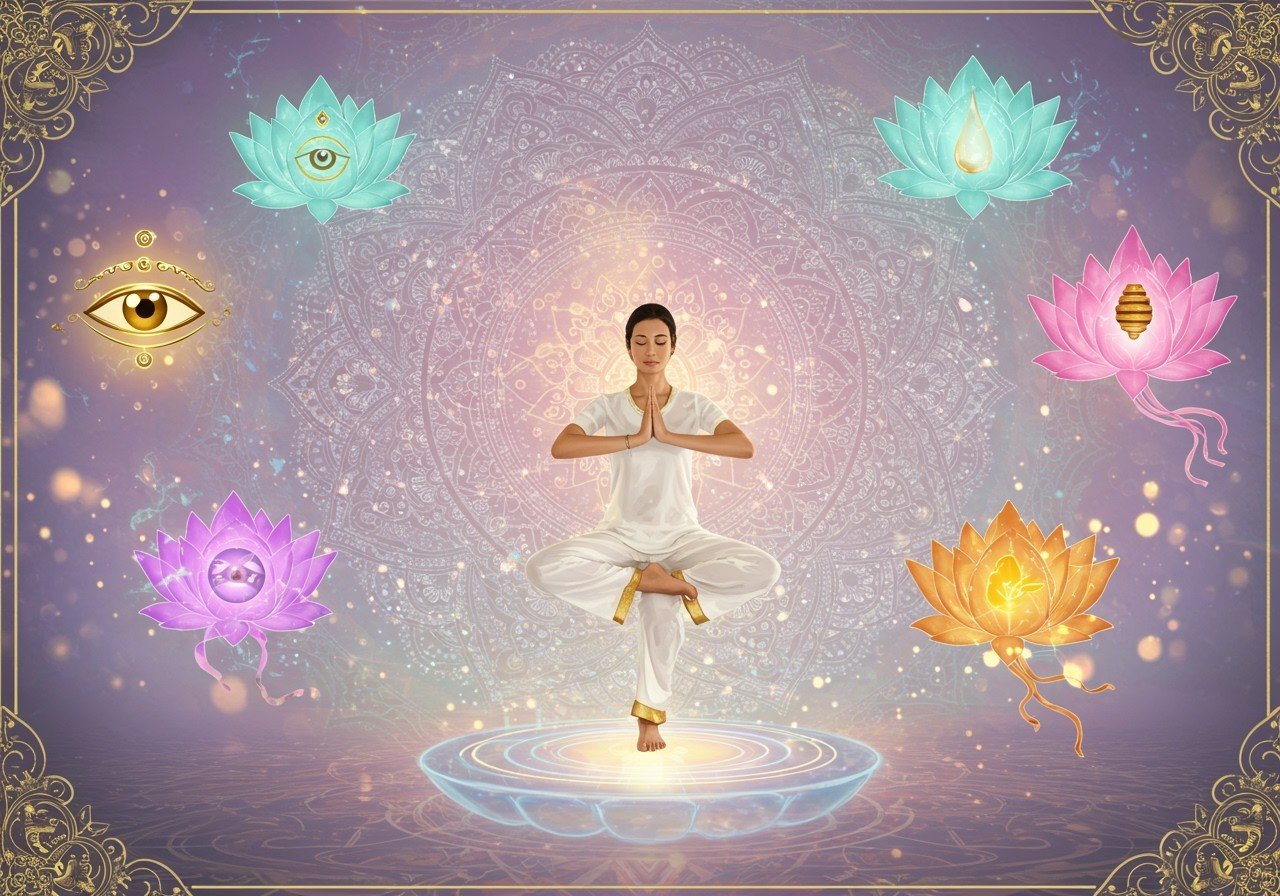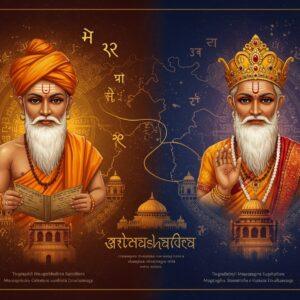
Yoga is more than just physical postures; it’s a holistic practice that engages all five senses—sight, sound, smell, touch, and taste—to connect you more deeply with your inner self. This connection between the senses and yoga is rooted in the concept of Tanmatras, subtle elements linked to each sense, bridging the gap between your mind, body, and the ancient wisdom of Indian philosophy.
Understanding Tanmatras in Yoga
Tanmatras are the fundamental building blocks of the material world according to Indian philosophy. Each Tanmatra corresponds to a specific sense organ and a related element, creating a framework for understanding sensory experiences in yoga. This knowledge allows for increased awareness and mindfulness during practice, leading to a deeper understanding of the self.
- Shabda (sound) is linked with Akasha (ether/space), representing the subtle essence of sound and its connection to the vastness of space. This connection emphasizes the importance of sound in yoga practices like mantra chanting and sound meditation.
- Sparsha (touch) is associated with Vayu (air), highlighting the tactile experience of the body and the flow of energy within. This connection emphasizes the importance of feeling the breath and the sensations of movement during asanas.
- Rupa (sight) corresponds to Agni (fire), representing the visual perception and the transformative power of focus. This connection emphasizes the use of Drishti, a focused gaze, during asana practice to improve concentration and stability.
- Rasa (taste) is connected to Apas (water), symbolizing the subtle essence of taste and the flow of emotions. This connection encourages mindful eating and awareness of taste experiences.
- Gandha (smell) relates to Prithvi (earth), representing the sense of smell and its grounding effect. This connection emphasizes the use of aromatherapy and natural scents in creating a calming environment for practice.
The Five Senses and Your Yoga Practice
Yoga encourages you to actively engage all your senses. Each becomes a pathway to deeper self-awareness and a more profound connection to your practice. This mindful engagement brings you closer to experiencing the benefits of yoga.
Sound (Shabda)
Sound, in the form of chanting or meditative music (Nada Yoga), can calm the mind and soothe the spirit. The vibrations of sound resonate within, creating a peaceful and introspective environment for your practice. Consider incorporating mantra chanting into your routine.
Touch (Sparsha)
The sense of touch is central to yoga. It heightens body awareness, grounding you in the present moment. The use of props and gentle adjustments further enhances this awareness, providing support and stability in your asanas. A high-quality yoga mat can elevate this experience, creating a comfortable and supportive foundation for your practice. Consider incense sticks to create a calming atmosphere.
Sight (Rupa)
Sight plays a key role in focus and concentration. Drishti, a fixed gaze point, helps anchor your attention, minimizing distractions and promoting a deeper connection to your practice. Visualizations during meditation can further enhance this focus, creating a more immersive and enriching experience. Meditation and mantras can further improve your concentration.
Taste (Rasa) and Smell (Gandha)
Taste and smell contribute to the holistic experience of yoga. Mindful eating before or after practice heightens taste awareness, connecting you with the Rasa Tanmatra. The aroma of incense or essential oils sets a calming atmosphere, engaging the Gandha Tanmatra and promoting a sense of tranquility. Using specific products like camphor can further enhance the sensory experience.
Practical Applications and Cultural Significance
Integrating Tanmatras into your daily practice can be as simple as focusing on your breath during pranayama (touch), practicing trataka (candle gazing) to sharpen sight, enjoying mindful meals (taste), and using aromatherapy (smell). Creating a dedicated yoga space with sensory elements—like a calming visual focal point, soothing scents, and a comfortable mat—further supports a deeper, more meaningful practice. This connection to Tanmatras also links you to the rich cultural heritage of yoga, as outlined in ancient texts like the Upanishads, deepening your appreciation for the practice.
Tanmatras and Self-Realization
The practice of pratyahara, withdrawing the senses inwards, helps you move beyond the physical realm, paving the way for self-realization. Mastering the Tanmatras brings balance and harmony, promoting spiritual growth and overall well-being.
Poojn.in: Supporting Your Yoga Journey
Poojn.in offers a wide selection of products designed to enhance your yoga practice and connect you with the Tanmatras. From Kusha grass mats for grounding (Prithvi) to pure copper vessels for water-based practices (Jal Tanmatra), we have everything you need to create a sacred and supportive environment for your practice. Explore our range of incense sticks, meditation accessories, and more to deepen your connection to the Tanmatras. Visit Poojn.in today to discover how we can support your yoga journey.
Embrace the Journey with Tanmatras
By incorporating the Tanmatras into your practice, you transform yoga into a profound sensory experience. This mindful engagement creates a bridge between ancient tradition and modern wellness, enriching your journey towards self-discovery and a deeper understanding of your practice.
FAQs on Tanmatras and Yoga
What are Tanmatras in Yoga? Tanmatras are subtle elements associated with each of our five senses. They represent the essence of sound, touch, sight, taste, and smell, and are used in yoga to enhance sensory awareness.
How do Tanmatras enhance yoga practice? Tanmatras deepen yoga practice by bringing mindful attention to the senses, fostering a stronger mind-body connection. This heightened awareness can lead to improved focus and a more fulfilling experience.
Why are the five senses important in yoga? The five senses ground us in the present moment. By understanding and engaging with the Tanmatras, you cultivate deeper concentration and a richer connection to your practice.
Can Tanmatras help in meditation? Yes, focusing on the senses through the lens of Tanmatras can significantly enhance meditation. It promotes a deeper sense of calm and improves clarity.
Are there specific yoga poses for each Tanmatra? While there aren’t poses specifically designed for each Tanmatra, integrating sensory awareness into any pose can amplify the benefits. For example, paying close attention to the sound of your breath during pranayama enhances the connection to Shabda (sound). Focusing on the feel of your feet grounding into the earth enhances the connection to Gandha (smell).


